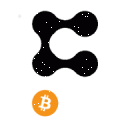
>>> Main <<<
1. "Vampire attack" is a new blockchain project's strategy to quickly attract users and their funds from a more popular competitor application.
2. As a rule, the creators of a new application present a product similar to the “original” in terms of functions, but offer its users more favorable incentives through native token rewards.
3. In the fall of 2020, the Uniswap decentralized exchange became the object of a vampire attack, and in January 2022, the OPENSEA NFT marketplace.
>>> What is the essence of the vampire attack? <<<
A typical vampire attack has three components:
1. Find a leading project. Create an analogue using the business model, architecture or code of the original.
2. Make excessive economic incentives the main difference from a popular competitor.
3. The result of this strategy should be the "sucking" of users and their capital by the new project from the object of attack - some popular protocol.
The vampire attack strategy originated in the decentralized finance (DeFi) space. The source code of DeFi applications, or the bulk of it, is usually open source. Thus, a similar application is quite easy to copy and run with only minor changes.
In addition, “copy” developers can easily issue their own governance tokens and use it to inflate the profitability of liquidity farming, which is a standard way for users to earn money.
>>> How did Uniswap fall victim to a vampire attack? <<<
In 2020, decentralized exchange Uniswap began to rapidly gain popularity in the DeFi space. By the beginning of September 2020, the daily trading volume in the protocol reached $1.8 billion, which was comparable to the leading centralized cryptocurrency trading platforms.
Against this background, a project called SushiSwap appeared. Its anonymous creators made no secret of the fact that the new protocol is a fork of Uniswap. However, SushiSwap had an important difference - its own SUSHI token, which its users received as a reward for farming in pools.
The SushiSwap team offered attractive conditions for liquidity providers: thanks to the rewards in SUSHI, participation in the exchange pools brought hundreds and even thousands of percent per annum. As a result of the vampire attack, Uniswap users transferred more than $1 billion worth of funds to SushiSwap in just a couple of weeks, reducing the amount of blocked liquidity (TVL) in the "original" by 70%.
However, this situation did not last long: the high speed of SUSHI farming led to a sharp inflation of its price, due to which the profitability in SushiSwap pools also quickly decreased. Already by mid-September, Uniswap returned to the DeFi leaders in terms of TVL. A little later, the UNI governance token appeared, which finally nullified the advantage of SushiSwap.
>>> How did the vampire attack on OpenSea take place in 2022? <<<
Another victim of the “vampires” was the OpenSea NFT marketplace, where the bulk of trading in non-fungible tokens takes place.
In early 2022, another NFT trading platform, LooksRare, began operating. Although its creators, unlike SushiSwap, did not copy OpenSea smart contracts, but wrote their own, the main element of their attack was also a platform token called LOOKS.
Users who traded NFTs on LooksRare received rewards in LOOK for their activity. But there was one condition: only those who traded on OpenSea in the amount of 3 ETH from June to December 2021 could participate in the distribution.
In addition to this “promotion”, users of the new platform could also receive LOOKS through staking with a yield of about 500% per annum. In addition, the commission for transactions on LooksRare was more profitable. The consequence of the vampire attack was a rapid increase in trading volume on LooksRare and its decline on OpenSea.
At the same time, LooksRare was much inferior to its competitor in the number of active users. Given comparable trading volumes, the researchers suggested that the few users of the new marketplace actively use flash trading, that is, they conduct a huge number of fake transactions for the sake of LOOKS rewards. According to the CryptoSlam report, by the beginning of April, the share of fictitious transactions in the total trading volume on LooksRare reached 95%.
After that, the site changed incentives and began to crack down on unfair practices, which led to a drop in activity. According to The Block, the amount of transactions fell from $69 million on May 1, 2022 to just $1 million on August 15, while the share of fake trades fell from 98% to 13% over the same period. At the same time, OpenSea regained its lead in the NFT market.
It is noteworthy that in 2021 the marketplace was already subjected to a vampire attack from the Infinity platform.
Thanks for reading!











